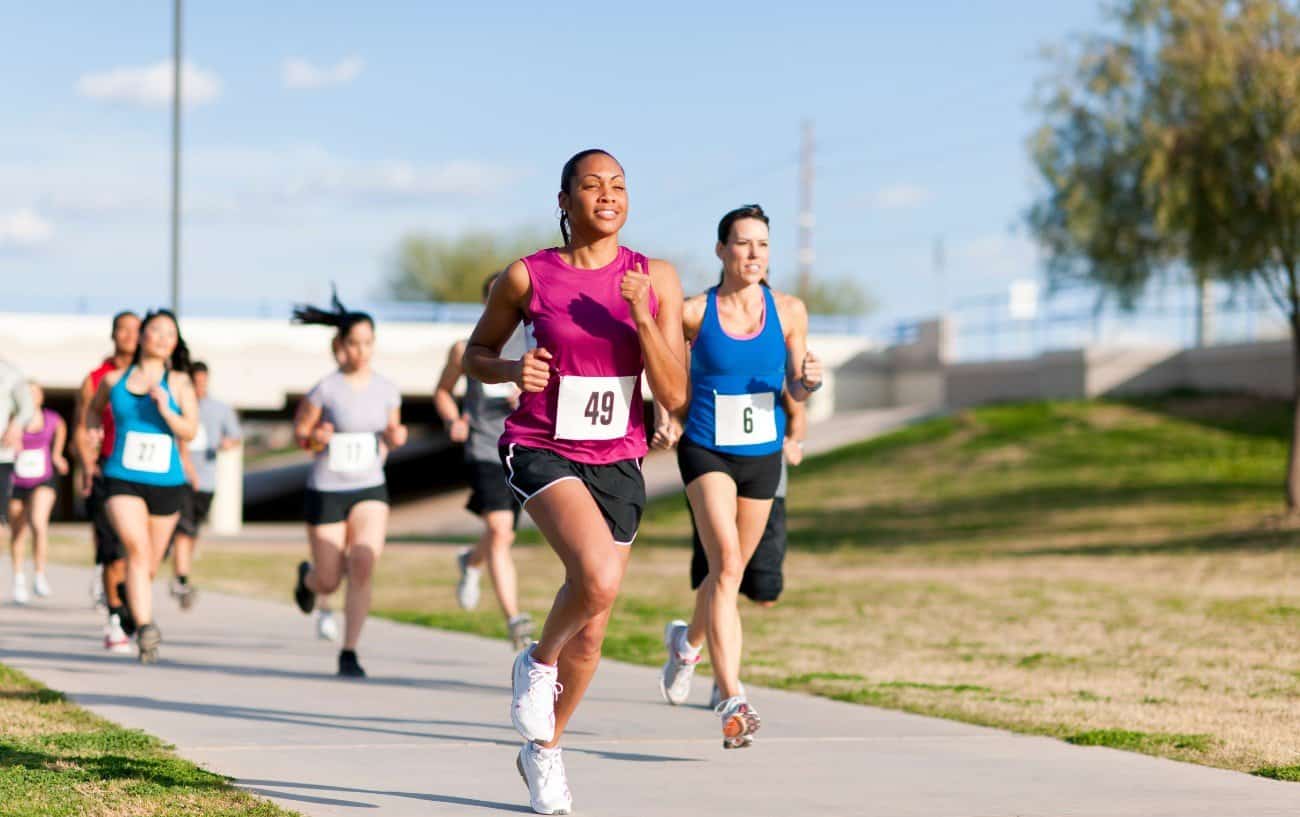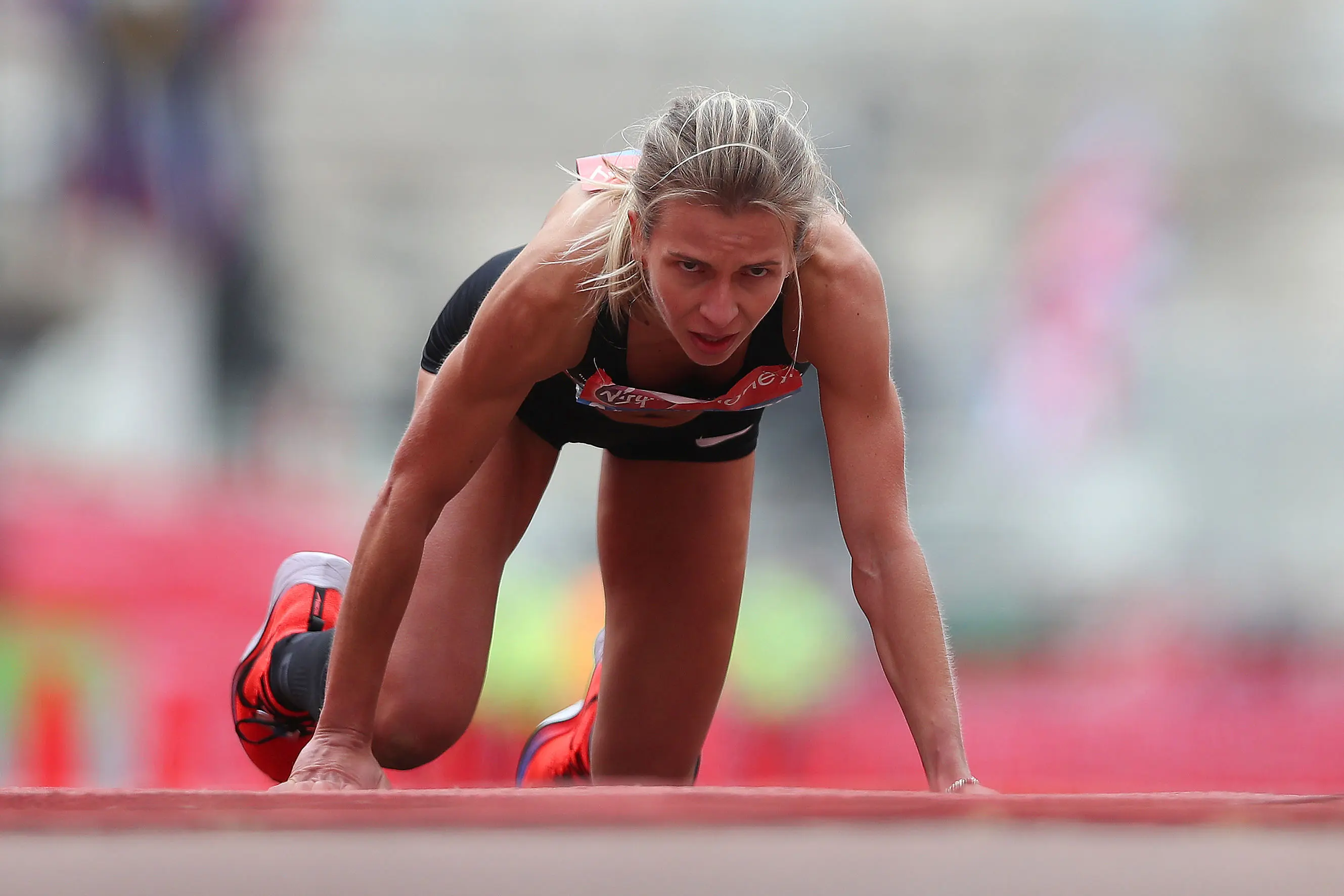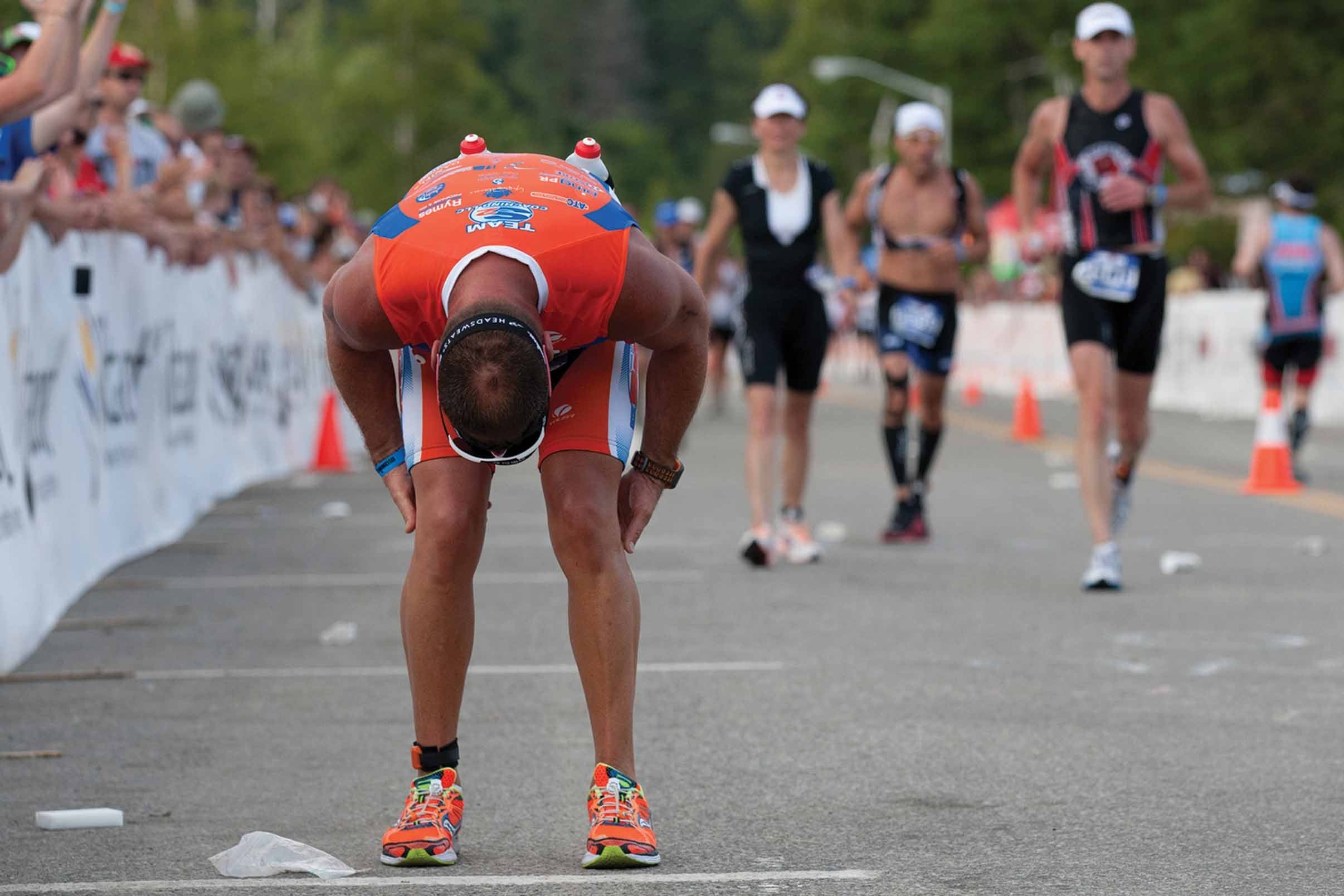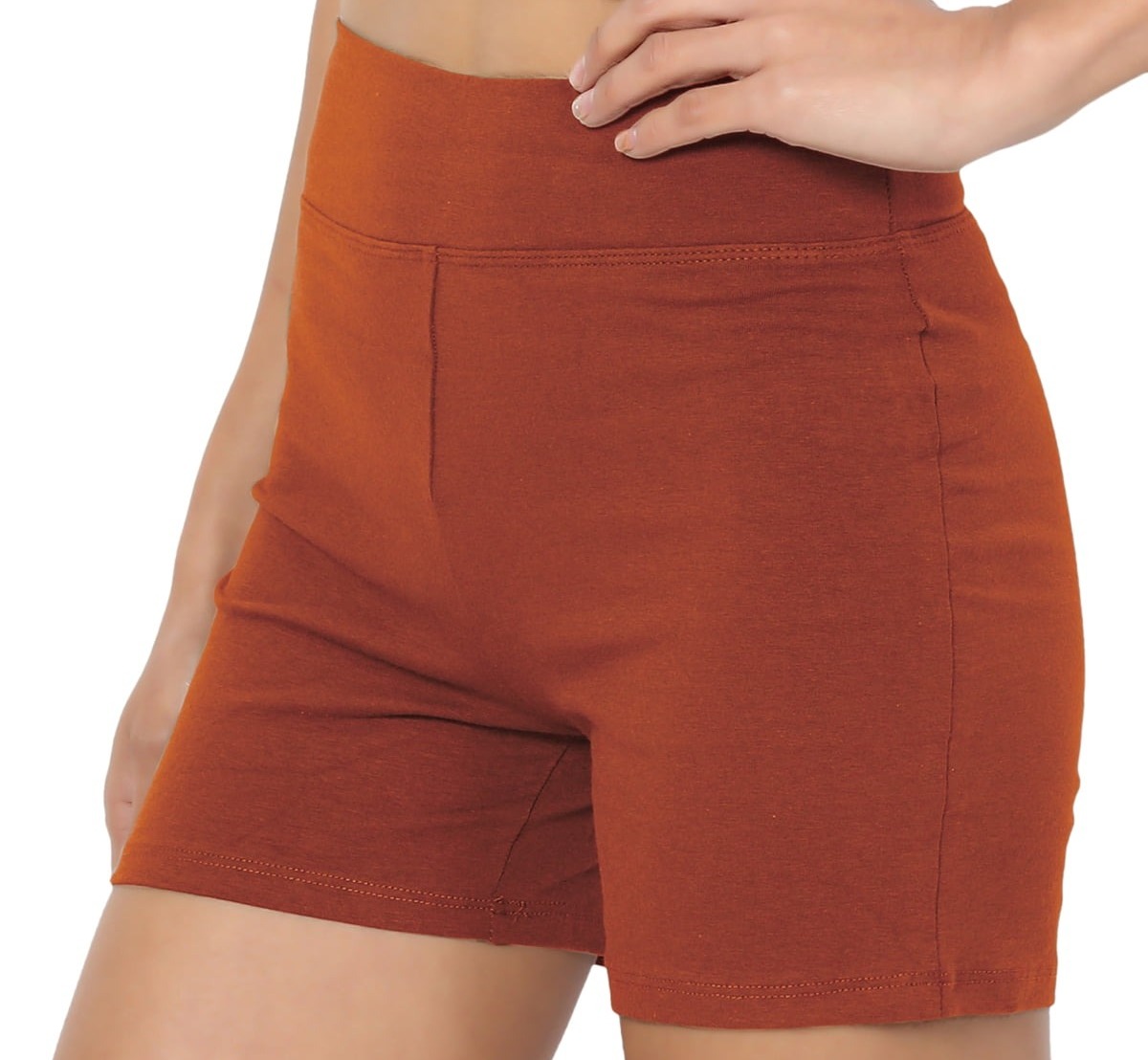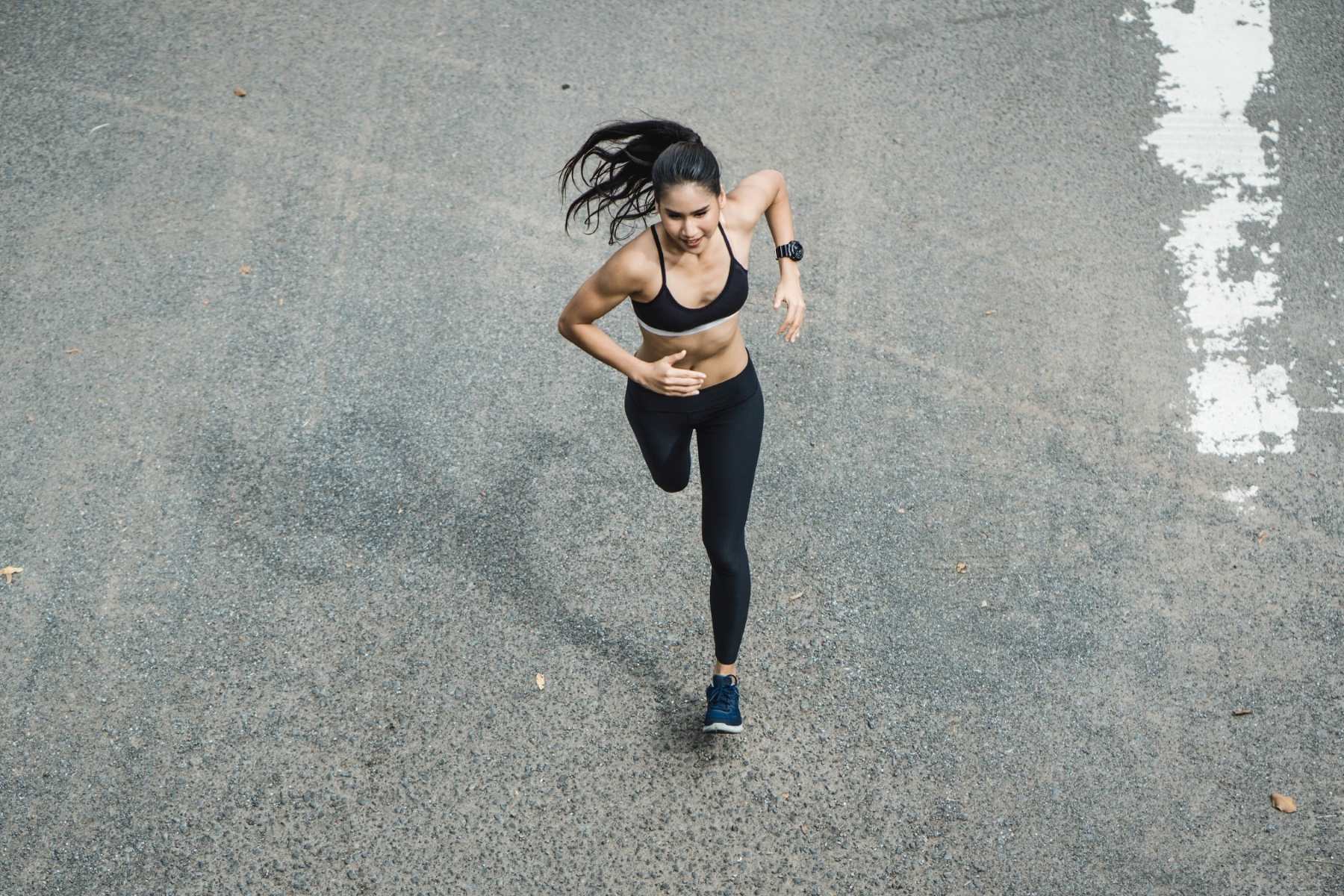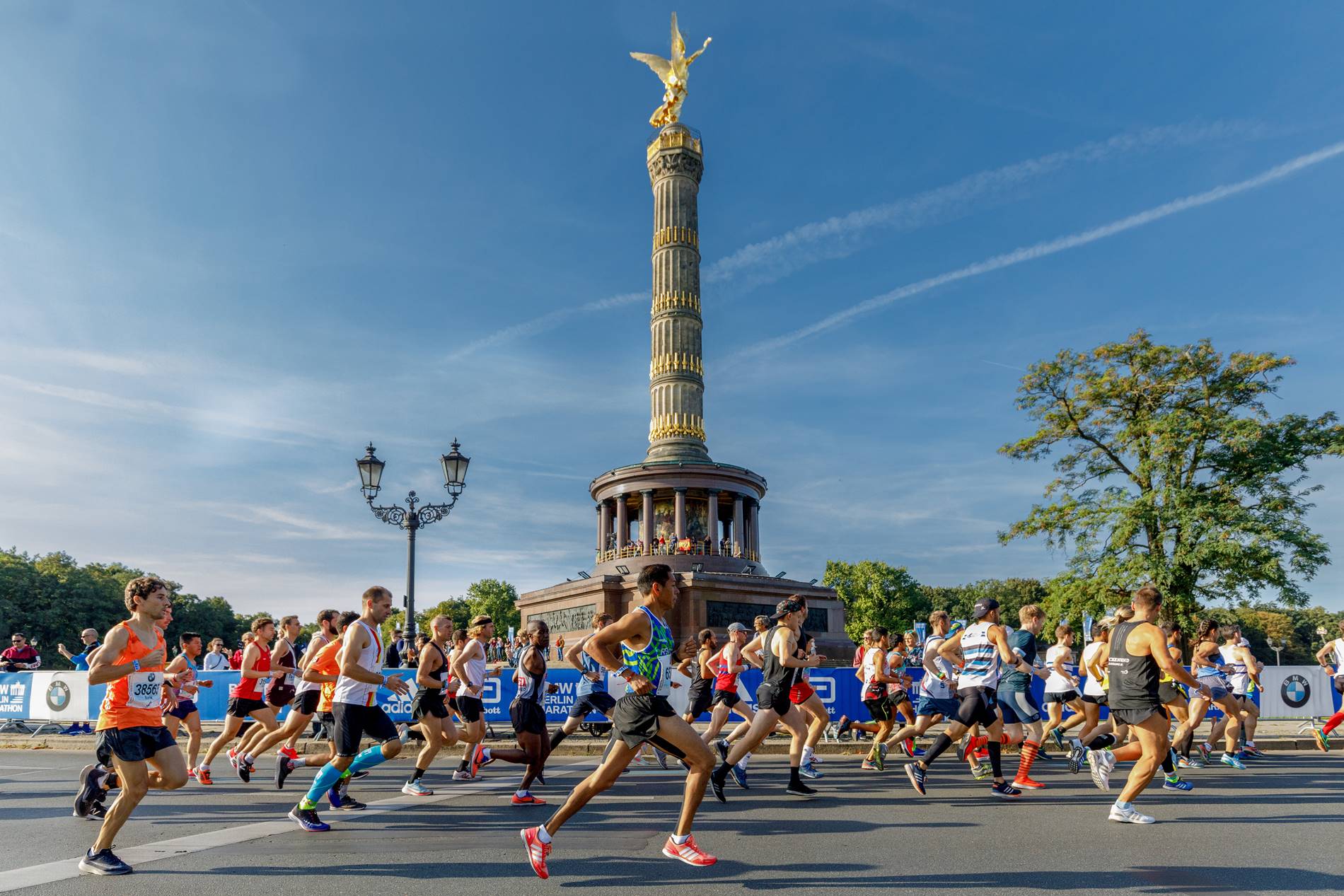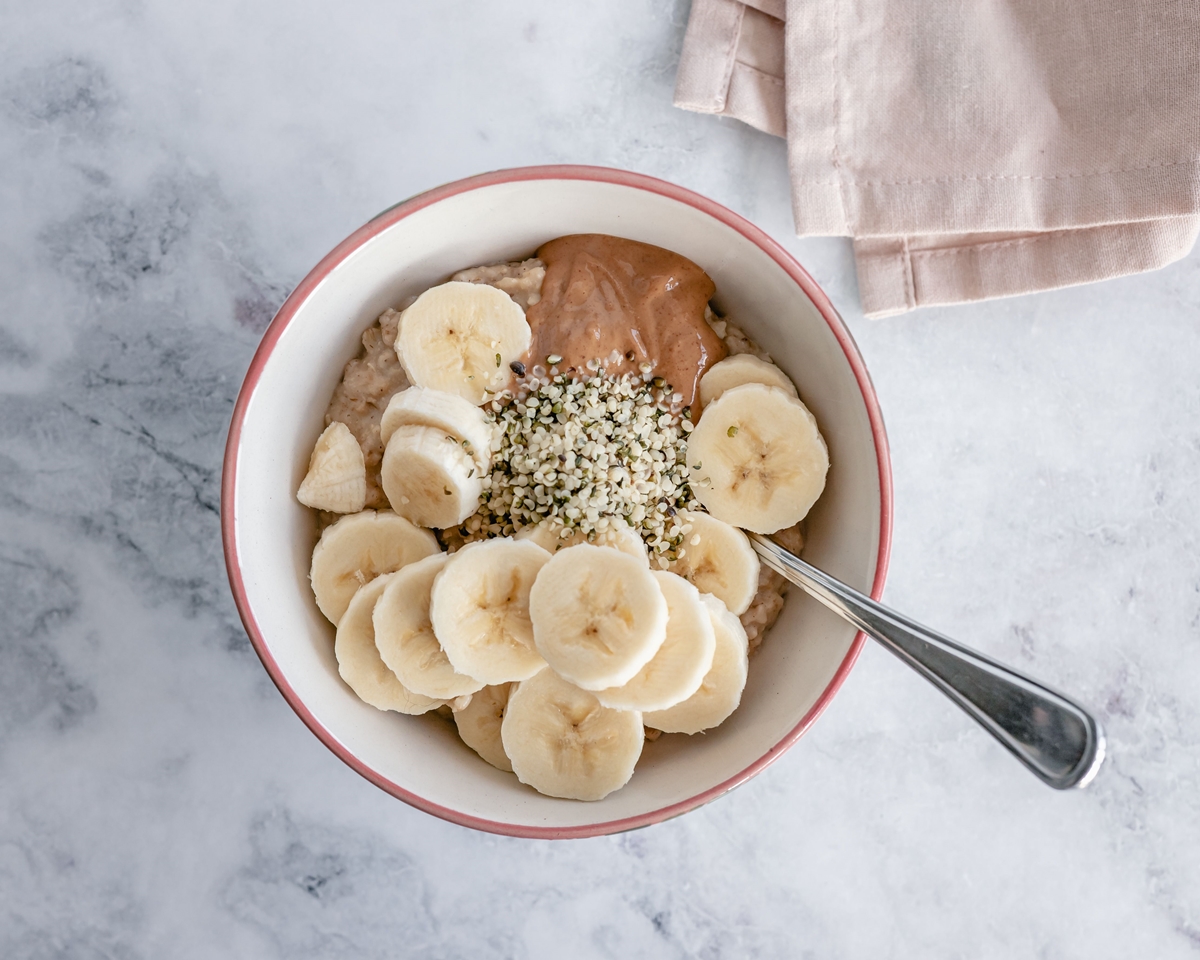Home>Misc>Featured>Why Do I Get Period Cramps When I Workout
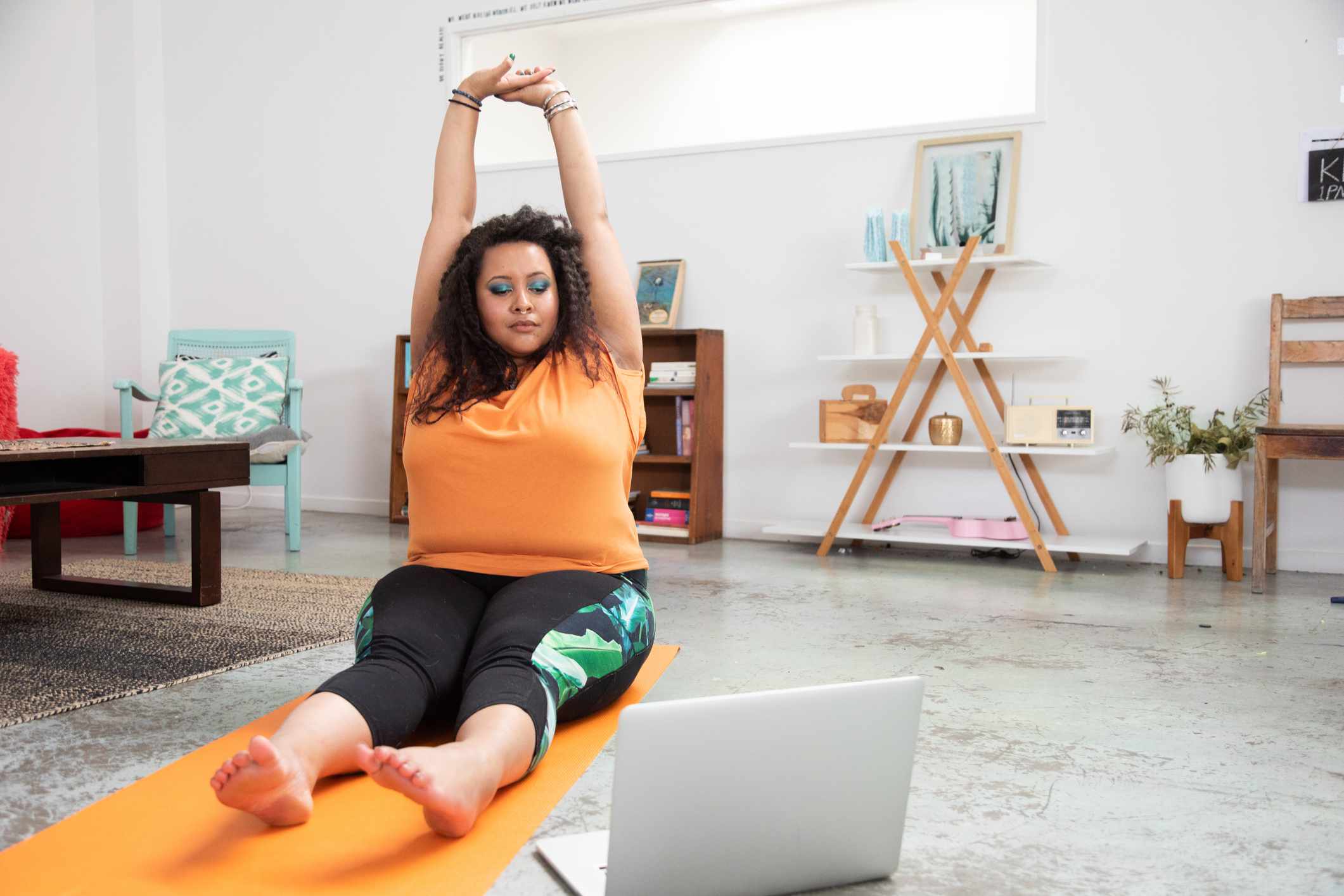

Featured
Why Do I Get Period Cramps When I Workout
Modified: August 21, 2023
Discover why you experience painful menstrual cramps during exercise. Our featured article explores the causes and solutions for period cramps during workouts.
Introduction
Period cramps, also known as dysmenorrhea, are a common and often uncomfortable experience for many women. They occur when the lining of the uterus sheds during menstruation, causing contractions in the uterine muscles. While period cramps are typically associated with the menstrual cycle, some women may also experience them during physical exercise.
Exercise plays a crucial role in maintaining overall health and well-being. It helps to improve cardiovascular fitness, build strength, and boost mood. However, for some women, the benefits of exercise may be hindered by the presence of period cramps. This can be frustrating and discouraging, but understanding the causes of cramps during workouts can help to manage and alleviate the discomfort.
In this article, we will explore why some women experience period cramps during exercise and discuss strategies for managing them. Whether you’re an avid athlete or simply enjoy staying active, understanding how to minimize the impact of cramps on your workouts can help you maintain your fitness routine and achieve your goals.
Understanding Period Cramps
Period cramps, also known as menstrual cramps or dysmenorrhea, are painful sensations that occur in the lower abdomen or back during menstruation. While the severity and duration of cramps can vary from person to person, they are a common experience for many women.
During menstruation, the lining of the uterus, or endometrium, sheds and is expelled through the cervix and vagina. This process is accompanied by contractions in the uterine muscles, known as uterine cramping. These contractions help to expel the menstrual blood.
Period cramps can range from mild to severe, with some women experiencing debilitating pain that interferes with their daily activities. The exact cause of period cramps is still not fully understood, but it is believed to be related to the release of chemicals called prostaglandins.
Prostaglandins are hormone-like substances that are naturally produced in the body. During menstruation, the levels of prostaglandins increase, causing the uterus to contract. These contractions can restrict blood flow to the uterus, leading to oxygen deprivation and the sensation of pain.
In addition to prostaglandins, other factors such as hormonal fluctuations, inflammation, and the presence of an underlying condition such as endometriosis or uterine fibroids can contribute to the severity of period cramps.
It’s important to note that while period cramps are a normal part of the menstrual cycle for many women, they can also be a sign of an underlying medical condition. If your cramps are consistently severe or significantly interfere with your daily life, it’s advisable to consult with a healthcare professional for further evaluation and appropriate management.
Causes of Period Cramps During Exercise
For some women, the onset of period cramps can coincide with the time they engage in physical exercise. While the exact reasons for this association are not fully understood, there are several potential factors that may contribute to the occurrence of cramps during workouts.
1. Increased Blood Flow: Exercise leads to an increase in blood flow to the muscles, including the pelvic region. This increased blood flow can intensify the contractions of the uterine muscles, leading to more pronounced period cramps.
2. Hormonal Changes: Exercise can also trigger hormonal changes in the body. During exercise, the levels of endorphins, also known as the “feel-good” hormones, increase. These endorphins can have an analgesic effect, reducing the perception of pain. However, hormonal fluctuations associated with exercise can also influence the intensity of period cramps.
3. Muscle Fatigue: Intense physical activity can cause muscle fatigue and soreness throughout the body. In the case of period cramps, the muscles in the pelvic region may already be contracting and experiencing discomfort. Exercise can exacerbate this muscle fatigue, leading to heightened sensations of cramping.
It is worth noting that not all women experience period cramps during exercise, and the severity of cramps can vary from person to person. Some women may find that exercise alleviates their cramps, as it promotes overall circulation and releases endorphins. However, for those who do experience cramps during exercise, it’s important to find strategies to manage and minimize the discomfort.
By understanding the potential causes of period cramps during exercise, women can adjust their workouts and incorporate strategies to reduce the impact of cramps on their fitness routine.
Increased Blood Flow and Cramps
One of the possible causes of period cramps during exercise is the increased blood flow to the pelvic area. When we engage in physical activity, our heart rate and circulation speed up to supply oxygen and nutrients to our muscles. This increased blood flow is necessary for the muscles to function optimally during exercise.
However, this heightened blood flow can also intensify the contractions of the uterine muscles, leading to more pronounced period cramps. The increased blood flow to the pelvic region can further restrict blood vessels and limit oxygen supply to the uterus, exacerbating the sensation of pain.
It’s important to note that the intensity of cramps can vary from person to person. Some women may experience mild discomfort during exercise, while others may find their cramps become more severe. Additionally, women who already have a higher level of prostaglandins, the chemicals responsible for uterine contractions, may be more susceptible to experiencing intensified cramps during physical activity.
To manage the impact of increased blood flow on period cramps during exercise, there are several strategies women can employ:
- Start with a gentle warm-up: Engaging in a gentle warm-up routine before exercise can help to gradually increase blood flow to the muscles. This can minimize the sudden rush of blood to the pelvic region and reduce the likelihood of intensified cramps.
- Take breaks as needed: If the cramps become too uncomfortable during exercise, it’s important to listen to your body and take breaks when necessary. Resting allows the muscles in the pelvic region to relax and can alleviate some of the discomfort.
- Consider low-impact exercises: Some women find that high-impact or intense exercises can exacerbate their cramps. In these cases, opting for low-impact exercises such as swimming, yoga, or walking can be more gentle on the body and lessen the intensity of the cramps.
- Stay hydrated: Proper hydration is essential for overall health, including menstrual health. Drinking enough water before, during, and after exercise can help to maintain blood volume and circulation, potentially reducing the impact of increased blood flow on cramps.
By being mindful of the impact of increased blood flow on period cramps during exercise and implementing these strategies, women can continue to stay active while reducing the discomfort they may experience.
Hormonal Changes and Cramps
Hormonal changes play a significant role in the menstrual cycle and can also contribute to the occurrence of period cramps during exercise. When we engage in physical activity, the body releases endorphins, which are often referred to as “feel-good” hormones due to their mood-enhancing properties.
While endorphins can have an analgesic effect and reduce pain perception, it’s important to note that the hormonal fluctuations associated with exercise can also influence the intensity of period cramps. Hormones such as estrogen and progesterone, which fluctuate throughout the menstrual cycle, can impact the severity of cramps.
Estrogen, for example, helps to regulate the menstrual cycle and plays a role in the severity of period cramps. During exercise, estrogen levels can fluctuate, affecting the sensitivity of the uterine muscles to pain. This means that some women may experience increased cramping during certain points in their cycle, particularly during the premenstrual phase.
Progesterone, on the other hand, helps to prepare the body for pregnancy. During the menstrual cycle, progesterone levels drop before menstruation, leading to the shedding of the uterine lining and the onset of cramps. Engaging in exercise can further disrupt hormonal balance, potentially exacerbating the cramping sensation.
While hormonal changes are a natural part of the menstrual cycle and cannot be completely controlled, there are ways to manage the impact of these changes on cramps during exercise:
- Track your menstrual cycle: Keeping track of your menstrual cycle can help you anticipate when you may experience more intense cramps. By planning your exercise routine accordingly, you can adjust the intensity or focus on lighter activities during those days.
- Listen to your body: Pay attention to your body’s signals during exercise. If you feel that the hormonal changes are contributing to increased cramps, modify your routine or opt for more gentle activities.
- Consider pain management techniques: Consult with your healthcare provider about appropriate pain management techniques that may help alleviate the discomfort caused by hormonal fluctuations, such as using over-the-counter pain relievers or applying heat therapy.
It’s important to remember that every woman’s body is unique, and the impact of hormonal changes on cramps can vary. By being attuned to your body’s needs and seeking professional guidance, you can find strategies to manage the effects of hormonal changes on period cramps during exercise.
Muscle Fatigue and Cramps
In addition to increased blood flow and hormonal changes, muscle fatigue can also contribute to the occurrence of period cramps during exercise. When we engage in physical activity, our muscles are put under stress and may experience fatigue and soreness.
During menstruation, the uterine muscles are already contracting and causing discomfort due to the shedding of the uterine lining. Exercise can exacerbate this muscle fatigue, leading to heightened sensations of cramping in the pelvic region.
When our muscles become fatigued, they are more prone to involuntary contractions and spasms. This can intensify the cramping sensation and make it more uncomfortable during exercise.
To manage the impact of muscle fatigue on period cramps during exercise, it’s important to consider the following strategies:
- Gradually increase exercise intensity: Start with lighter exercises and gradually build up the intensity over time. This allows your muscles to adapt and reduces the likelihood of excessive fatigue and cramping.
- Take regular breaks: Incorporate rest periods into your exercise routine. Resting allows your muscles to recover and prevents them from reaching the point of extreme fatigue. This can help minimize the occurrence of cramps.
- Focus on stretching and flexibility exercises: Incorporate stretching and flexibility exercises into your routine to help prevent muscle tightness and maintain optimal muscle function. Stretching can also help to alleviate cramps by relaxing the muscles in the pelvic region.
- Consider gentle forms of exercise: If you find that high-impact or intense exercises worsen your cramps, try opting for gentler forms of exercise such as yoga, Pilates, or tai chi. These activities can help strengthen and stretch the muscles without placing excessive stress on them.
By being mindful of muscle fatigue and implementing these strategies, you can reduce the impact of muscle fatigue on period cramps during exercise and continue to stay active without undue discomfort.
Tips to Manage Cramps During Workouts
Experiencing cramps during workouts can be frustrating and disruptive. However, there are several strategies that can help manage and alleviate the discomfort associated with period cramps. By implementing these tips, you can continue to stay active and maintain your fitness routine:
- Proper Warm-Up and Stretching: Before engaging in any physical activity, it’s crucial to warm up your muscles and loosen your joints. This helps to increase blood flow and prepares your body for exercise. Incorporating stretching exercises can also help to relax the muscles and alleviate cramps.
- Hydration and Nutrition: Staying properly hydrated is essential for overall health and can help ease period cramps. Make sure to drink enough water before, during, and after your workout. Additionally, maintaining a balanced diet with foods rich in essential nutrients, such as fruits, vegetables, and whole grains, can support overall menstrual health.
- Use of Heat or Cold Therapy: Applying heat or cold to the affected area can provide relief from cramps. You can use a heating pad or take a warm bath to relax the muscles, or apply a cold compress to numb the area and reduce inflammation.
- Pain Management Techniques: Over-the-counter pain relievers, such as ibuprofen or naproxen sodium, can help alleviate period cramps during workouts. However, it’s important to consult with your healthcare provider before taking any medication to ensure it is safe for you.
- Listen to Your Body: Pay attention to your body’s signals and adjust your workout intensity or modify your routine if needed. It’s important to find a balance between staying active and allowing your body to rest when necessary.
Remember, every woman’s body is unique, and what works for one person may not work for another. It may take some trial and error to find the strategies that work best for you in managing cramps during workouts. Don’t hesitate to seek guidance from a healthcare professional who can provide personalized advice based on your individual needs.
By implementing these tips and strategies, you can effectively manage and reduce the impact of period cramps during your workouts, allowing you to continue enjoying the benefits of regular exercise while minimizing discomfort.
Proper Warm-Up and Stretching
A proper warm-up and stretching routine is essential before engaging in any physical activity, especially for those who experience period cramps during workouts. A well-executed warm-up helps prepare the body for exercise by increasing blood flow to the muscles, raising body temperature, and improving flexibility. Additionally, incorporating stretching exercises can help to relax the muscles and alleviate cramps.
Here are some tips for a proper warm-up and stretching routine to manage cramps during workouts:
- Start with light aerobic activity: Begin your warm-up with low-intensity aerobic exercises like brisk walking, gentle jogging, or cycling. These activities gradually increase your heart rate and blood flow, preparing your muscles for more intense exercise.
- Dynamic stretching: Instead of static stretching, which involves holding a stretch for an extended period, include dynamic stretching in your warm-up routine. Dynamic stretching involves controlled movements that gently stretch the muscles and improve their flexibility. Examples include arm circles, leg swings, and torso twists.
- Focus on the lower body: Since period cramps typically affect the lower abdomen and pelvic area, it’s essential to focus on warming up and stretching the lower body. Include exercises that target the hips, thighs, and lower back, such as lunges, hip rotations, and gentle lower back stretches.
- Incorporate pelvic floor exercises: Strengthening the pelvic floor muscles can help alleviate cramps and improve overall pelvic health. Consider including pelvic floor exercises, like Kegels, in your warm-up routine. These exercises involve contracting and relaxing the pelvic floor muscles to improve circulation and reduce tension.
- Gradually increase intensity: After completing your warm-up and stretching routine, gradually increase the intensity of your workout. Listen to your body and be mindful of any signs of discomfort or excessive cramping. Pace yourself and avoid sudden, high-intensity movements that can potentially worsen cramps.
Remember, a warm-up and stretching routine should be personalized to your individual needs and fitness level. If you’re unsure about which exercises to include or how to properly execute them, consult with a qualified fitness professional or physical therapist for guidance.
By incorporating a proper warm-up and stretching routine into your workout regimen, you can prepare your body for exercise, minimize the risk of cramping, and enhance your overall performance and comfort during your workouts.
Hydration and Nutrition
Proper hydration and nutrition are important factors in managing period cramps during workouts. Staying adequately hydrated and maintaining a balanced diet can help alleviate discomfort and support overall menstrual health.
Here are some tips for managing hydration and nutrition to minimize cramps during workouts:
- Drink enough water: During menstruation, the body loses fluids through the menstrual flow. It’s crucial to stay hydrated by drinking enough water throughout the day, including before, during, and after exercise. Proper hydration helps maintain blood volume, improve circulation, and reduce the intensity of cramps.
- Avoid dehydrating beverages: Limit or avoid the consumption of dehydrating beverages such as caffeinated drinks and alcohol during your menstrual cycle. These substances can increase fluid loss and potentially worsen cramps.
- Maintain a balanced diet: Eating a balanced diet rich in essential nutrients can support overall menstrual health and help alleviate cramps. Include a variety of fruits, vegetables, whole grains, lean proteins, and healthy fats to ensure you’re getting a good mix of vitamins, minerals, and antioxidants that support muscle function and reduce inflammation.
- Focus on anti-inflammatory foods: Incorporate foods with anti-inflammatory properties, such as fatty fish (like salmon), nuts, seeds, leafy greens, and turmeric, into your diet. These foods can help reduce inflammation, which may contribute to the intensity of cramps.
- Consider nutritional supplements: Some women find relief from cramps by taking certain nutritional supplements. Magnesium, omega-3 fatty acids, and vitamin E have been shown to have potential benefits for menstrual cramps. However, it’s important to consult with a healthcare professional before starting any new supplements to ensure they are suitable for you.
- Listen to your body: Pay attention to how your body responds to different foods. Some individuals may find that certain foods, such as processed foods, refined sugars, or high-sodium foods, exacerbate cramps. It’s important to listen to your body’s signals and make dietary adjustments accordingly.
Everyone’s nutritional needs may vary, so it’s essential to find an individualized approach that works best for you. If you have specific dietary concerns or questions, consider consulting with a registered dietitian or healthcare professional who can provide personalized advice and guidance.
By prioritizing hydration and maintaining a balanced diet, you can support your body’s needs during your menstrual cycle, minimize the impact of cramps, and optimize your performance during workouts.
Use of Heat or Cold Therapy
Heat and cold therapy are commonly used methods to alleviate discomfort and provide relief from period cramps. Applying heat or cold to the affected area can help relax the muscles, reduce inflammation, and minimize the sensation of pain during workouts.
Here are some ways to incorporate heat or cold therapy to manage cramps during workouts:
- Heat Therapy: Applying heat to the lower abdomen and pelvic area can help relax the muscles and alleviate cramps. There are different ways to apply heat therapy, such as using a heating pad, taking a warm bath or shower, or using heat patches or wraps. Choose a method that is most convenient and comfortable for you.
- Hot Water Bottle or Heat Pack: Placing a hot water bottle or heat pack on the lower abdomen or lower back can provide soothing warmth and help ease muscle tension and cramps. Wrap the heat source in a thin towel and apply it for 15-20 minutes at a time.
- Warm Bath: Taking a warm bath can help relax your entire body and relieve menstrual cramps. Adding Epsom salts or essential oils, such as lavender or chamomile, to the bathwater can enhance relaxation and provide additional benefits.
- Cold Therapy: Cold therapy can help numb the area and reduce inflammation, providing temporary relief from cramps. You can apply a cold compress or ice pack wrapped in a thin towel to the lower abdomen or lower back for around 15 minutes. Remember to never apply cold directly to the skin, as it can cause damage.
- Alternating Heat and Cold: Some individuals find relief by alternately applying heat and cold therapy to the affected area. Start with heat therapy for several minutes, then switch to cold therapy for a few minutes, and repeat the cycle as needed. This can help promote muscle relaxation and reduce inflammation simultaneously.
Everyone’s preferences and responses to heat or cold therapy may vary. It’s important to listen to your body and use the method that provides the most relief for you. If you have any concerns or underlying medical conditions, it’s advisable to consult with a healthcare professional before using heat or cold therapy.
Incorporating heat or cold therapy as part of your pre-workout routine or during rest periods can help manage cramps and discomfort, allowing you to continue your workouts with greater ease and comfort.
Pain Management Techniques
Period cramps can be debilitating and interfere with your ability to exercise comfortably. However, there are various pain management techniques that can help alleviate discomfort and allow you to continue your workouts with greater ease.
Here are some effective pain management techniques to consider:
- Over-the-counter pain relievers: Nonsteroidal anti-inflammatory drugs (NSAIDs), such as ibuprofen or naproxen sodium, can help reduce inflammation and alleviate period cramps. However, it’s important to consult with a healthcare professional before taking any medication to ensure it is safe for you and to determine the appropriate dosage.
- Topical pain relievers: There are topical creams or gels available that can provide temporary relief from menstrual cramps. These creams usually contain ingredients like menthol or natural extracts that create a cooling or warming sensation, helping to soothe the affected area.
- Acupressure or acupuncture: Acupressure involves applying pressure to specific points on the body to promote pain relief. Similarly, acupuncture, which is performed by a trained professional, involves the insertion of thin needles at specific points on the body. Both techniques may help alleviate menstrual cramps and promote relaxation.
- Transcutaneous electrical nerve stimulation (TENS): TENS is a technique that uses low-voltage electrical currents to provide pain relief. It involves placing electrodes on the skin near the affected area, which deliver electric pulses to stimulate the nerves and reduce pain perception.
- Relaxation techniques: Engaging in relaxation techniques, such as deep breathing exercises, meditation, or yoga, can help relax the body and reduce muscle tension. These techniques promote a sense of calmness, which in turn can alleviate menstrual cramps and discomfort.
- Mind-body exercises: Mind-body exercises, such as tai chi or qigong, combine movement, breath control, and meditation to promote overall well-being. These practices can help reduce stress levels, enhance blood circulation, and alleviate menstrual cramps.
It’s important to find the pain management techniques that work best for you. What may work for one person may not have the same effect for another. Experiment with different methods and consult with a healthcare professional or pain management specialist if you need further guidance.
Remember to listen to your body and adjust your exercise routine based on the level of discomfort you’re experiencing. Taking breaks when needed and modifying the intensity or type of exercise can help you continue your workouts while managing pain effectively.
Conclusion
Experiencing period cramps during workouts can be challenging, but it doesn’t have to derail your fitness routine. By understanding the causes of cramps during exercise and implementing effective strategies, you can manage and alleviate the discomfort associated with period cramps.
Increased blood flow, hormonal changes, and muscle fatigue are potential factors that contribute to cramps during workouts. By gradually increasing exercise intensity, taking breaks as needed, and focusing on gentle forms of exercise, you can minimize the impact of these factors on cramps.
Proper warm-up and stretching routines prepare your body for exercise and can help alleviate cramps. Hydration and balanced nutrition contribute to overall menstrual health and can reduce the intensity of cramps. Heat or cold therapy, along with pain management techniques, offer relief during workouts, allowing you to continue exercising with more comfort.
It’s important to listen to your body, make adjustments according to your individual needs, and seek guidance from healthcare professionals or fitness experts when necessary. Remember that every woman’s experience with period cramps is unique, and it may take some trial and error to find the strategies that work best for you.
With dedication and a proactive approach to managing period cramps during workouts, you can maintain your fitness routine, achieve your goals, and prioritize your overall well-being. Don’t let cramps hold you back from enjoying the numerous benefits of exercise and staying active during your menstrual cycle.
